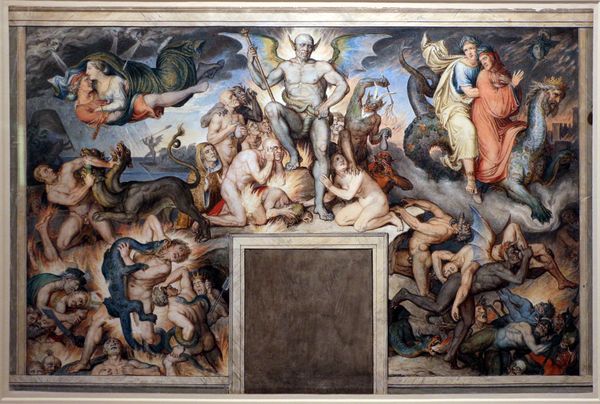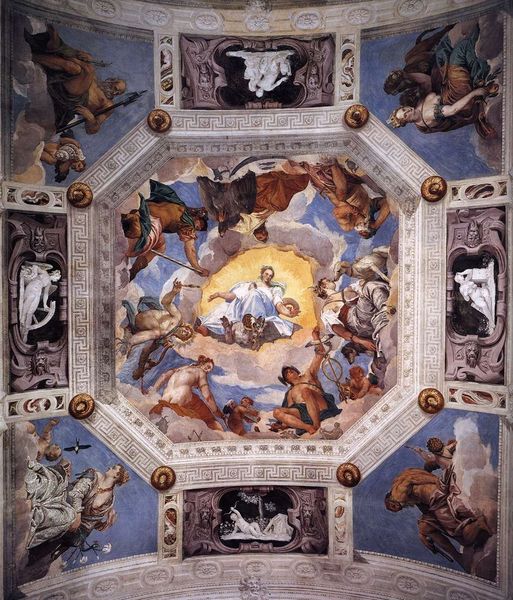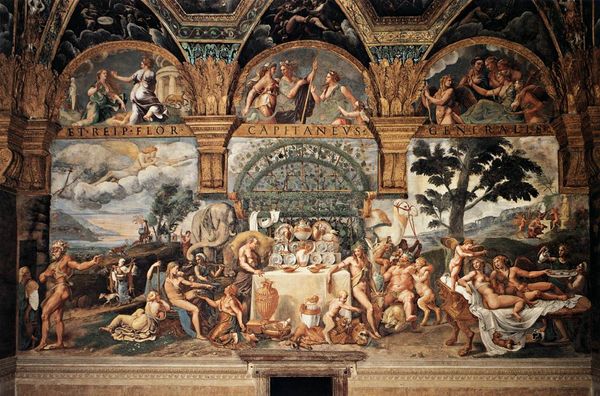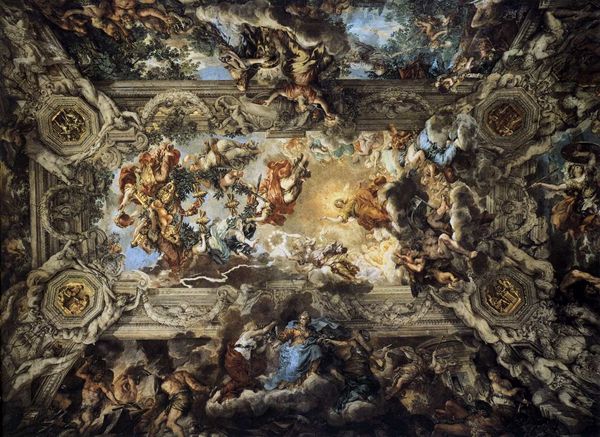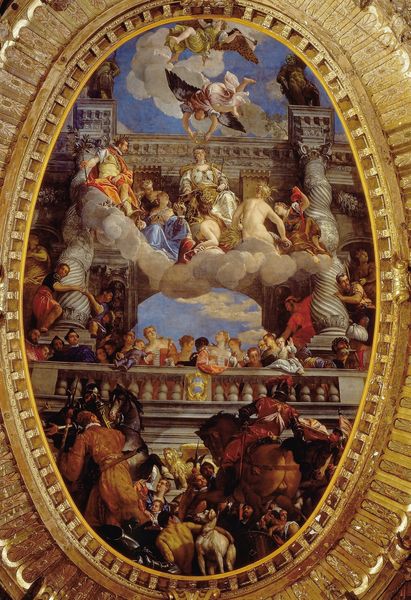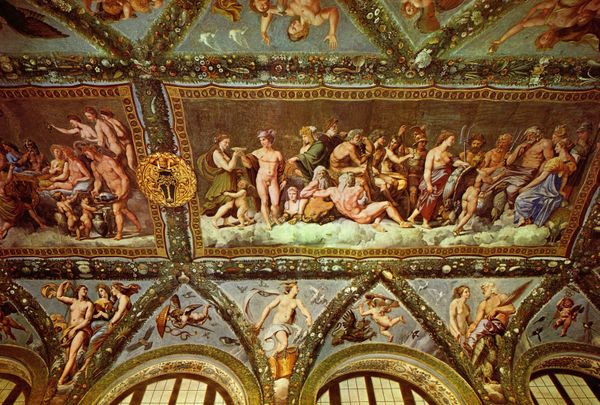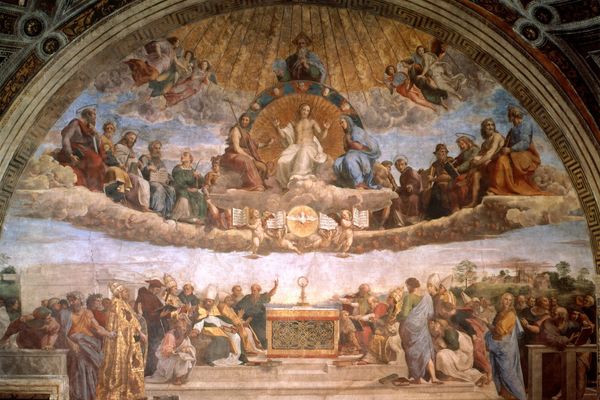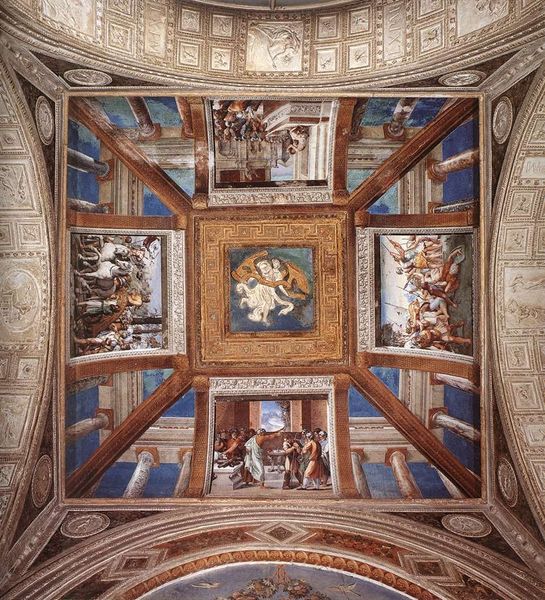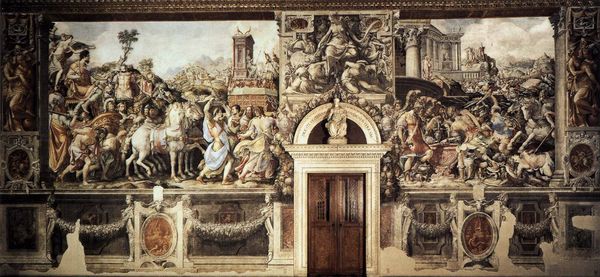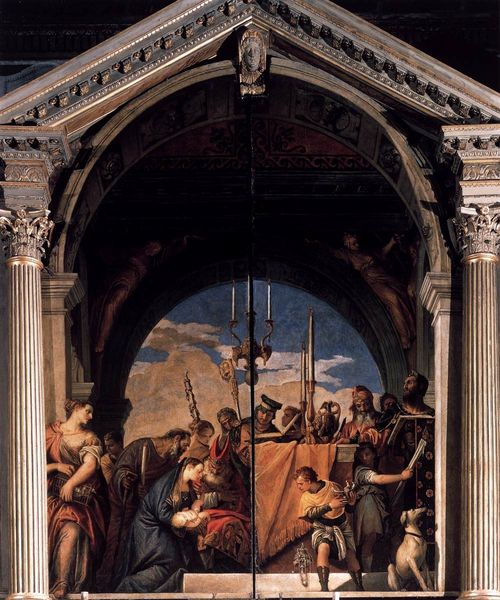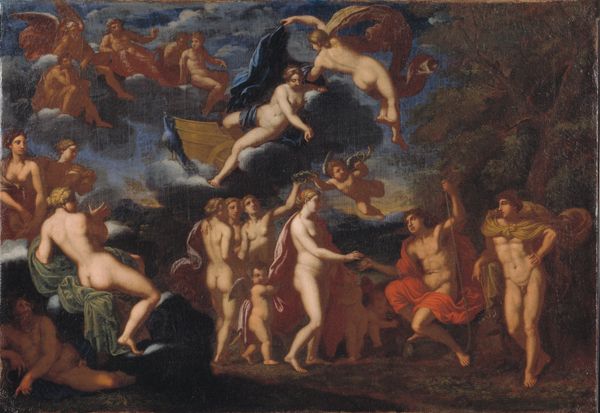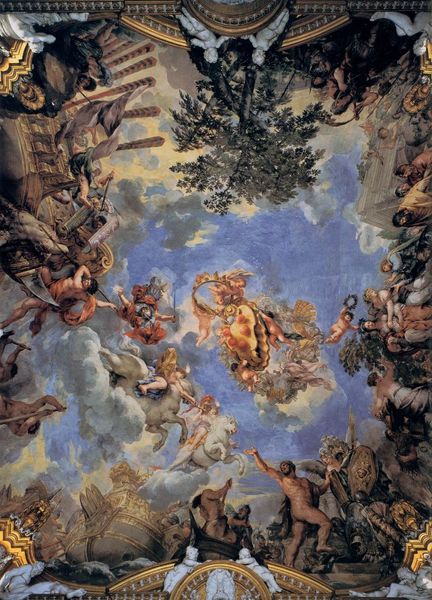painting, fresco, architecture
#
portrait
#
high-renaissance
#
allegory
#
painting
#
sculpture
#
holy-places
#
figuration
#
fresco
#
christianity
#
history-painting
#
italian-renaissance
#
architecture
#
historical building
#
christ
Dimensions: 1370 x 1220 cm
Copyright: Public domain
Comments
artera almost 2 years ago
⋮
The Last Judgment is generally regarded as one of Michelangelo Buonarroti's (1475-1564) greatest masterpieces. Inspired by Dante's Divine Comedy, the fresco was commissioned by Pope Paul III, begun in 1535, and finally revealed on October 31, 1541. Its creation required the destruction of Perugino's frescoes, which had previously adorned the altar wall of the Sistine Chapel. This work has become so iconic that it is difficult to remember that in its own time it was controversial. Not least of all the concerns regarding the image was its pervasive nudity, much of which was later covered up by Michelangelo's pupil, Daniele da Volterra, and finally uncovered again by restorers.
Join the conversation
Join millions of artists and users on Artera today and experience the ultimate creative platform.

